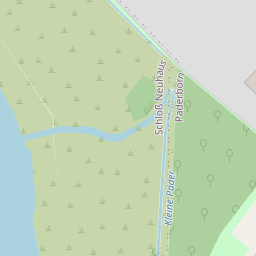Cute-machining - Cutting edge machining intelligence cloud
Overview
The Project "Cutting edge machining intelligence cloud", aims at the optimization of manufacturing processes by empowering the machining tools as "Smart Objects". In this project, the problem of tool-life fluctuations and the lack of predictability of tool-life in CNC machines are addressed and resolved using the so-called "tool monitoring" systems. The key to the success of the project, will be a new generation of passive Radio Frequency Identification (RFID) tags, that can identify the tools anywhere in a rather harsh and multi-path-fading dominated environment, and can feed a cloud-based technology database with the online operating data, in order to improve the efficiency of manufacturing processes in the context of industry 4.0.
Currently available commercial tool identification systems are either based on the optical methods with a need of direct line-of-sight, or based on passive transponder technologies operating in LF or HF bands (120 kHz to 13.56 MHz), with a strongly limited read range. The UHF band at 866 MHz, allows for a high reading range of 10 meters in obstacle-free scenarios. Strong multi-path fading in production environments due to many metallic objects calls for a combination of MIMO and RFID technology. However at 866 MHz suitable antennas have sizes of about 10 cm which makes the multi-antenna MIMO readers large and also prohibits to tag small objects even with a single-antenna tag. The required RFID tags for tool identification in this project, have to be readable from only a few-meter distance but have to be implemented as robust as possible (MIMO) and require small tag size (small antennas), which could only be realized with the use of higher RFID frequencies at e.g. 2.5 or 5.8 GHz.
The greatest challenge in the implementation of passive RFID tags lies generally in the limited operation power of the whole system, which strongly depends on the energy harvesting from the reader, i.e. rectification of radio frequency signals from the reader. A link/power budget analysis, shows the extreme constraints with respect to the available signal power at the receiver e.g. in the 5.8 GHz microwave frequency band. Besides the low available signal power the high signal frequency limits the efficiency of the RF-to-DC conversion.
In the Cute-Machining project, the System and Circuit Technology research group of the Heinz Nixdorf Institute, works on the design of the Analog/RF Front-end of next-generation passive RFID transponders at 5.8 GHz. Implementation of high-efficiency high-frequency rectifiers as the main power supplying block represents the major research focus. Our research approach combines novel circuit solutions with semiconductor-technology-based approaches in the design of the Energy Harvesting circuitry, together with low-voltage / low-power design techniques for the analog and digital building blocks in order to achieve a fully-passive tag. Target technology is a commercial 65 nm CMOS technology.
The project is being carried out in collaboration with academic and industrial partners under the framework of the program Produktion.NRW, and is funded by the European Union (EFRE) and the state of North Rhine-Westphalia.
Key Facts
- Project duration:
- 04/2016 - 06/2019
- Funded by:
- EU, EFRE.NRW, LeitmarktAgentur.NRW
More Information
Contact
If you have any questions about this project, contact us!
Saed Abughannam
Sanaz Haddadian, M.Sc.
Institute for Photonic Quantum Systems (PhoQS)
Wissenschaftliche Mitarbeiterin - Mitglied





















